How to Fix the Prime.exe Application Error on Windows?
Prime.exe Application Error problems occur when the relevant file is missing or corrupted due to malware infection and are often seen on IBM ThinkPad 570 MT 2644 programs.

Here are a few of the most common Prime.exe error messages that Windows errors can face:
- Error in Application: PRIME.EXE
- Win32 Software Error: PRIME.EXE
- PRIME.EXE not working
- PRIME.EXE: App Path is Faulting
The best way to fix these issues is to run a malware scan to eliminate any virus or corruption errors within the system. In some cases, you can also replace the EXE files to eliminate the problem.
In this guide, we will walk you through different troubleshooting methods that worked for other users facing the Prime.exe application error on their Windows operating systems. We suggest you go through the methods first to understand what might be causing the issue in your case and then proceed with the relevant troubleshooting method.
1. Scan for Malware
To begin troubleshooting, we advise you to scan your system for malware with a malware remover, as several users have reported malware/malicious programs as the cause of the problem.
The best way to proceed is by installing Malwarebytes and scanning the system using it. If it identifies any issues, the program will notify you. You can then fix the issues using Malwarebytes as well. Once you are done with this, run an offline scan using Windows Defender or any other third-party antivirus solution that you may be using.
We have divided this method into two parts. In the first part, we will use Malwarebytes to scan the system. In the latter, we will use Windows Defender to look for the potential problem.
Here is how you can proceed:
1.1 Use Malwarebytes
- Download Malwarebytes.

Download Malwarebytes using your browser - Once the file is downloaded, click on it to proceed with the program’s installation. You can skip the browser protection feature offered by the program during installation if you want.
- After the program is installed, launch it and click on the Scan button in the Scanner section.
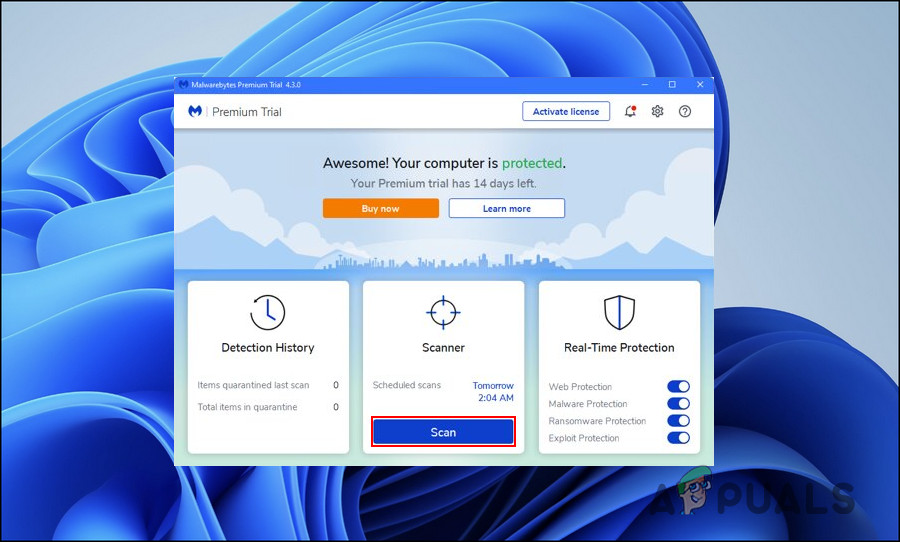
Click on the Scan button - The scanner will now begin to scan your system for any potential errors. Wait for the scan to complete. Depending on your system, this process might take a while.
- If potential problems are identified, you will see a list of the threats after the scan completes. In that case, click on the Quarantine button. When a potentially malicious file is quarantined, it is placed in a location where it can cause no other harm to the system till you decide what you want to do with it.
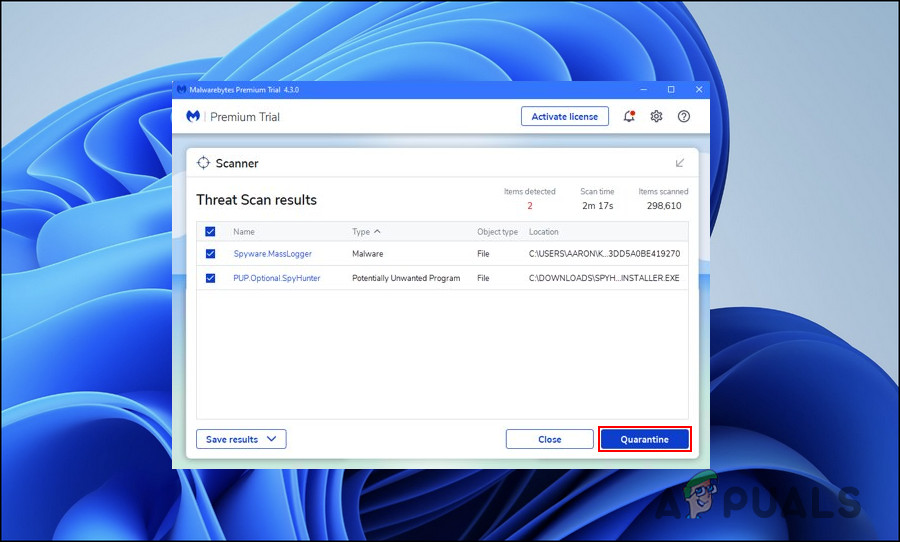
Click on the Quarantine button
Once this is done, use Microsoft Windows Defender or your third-party antivirus software to run an offline scan to fix the Prime.exe issue.
1.2 Use Microsoft Windows Defender
Follow these steps to proceed if you are a Windows 11 user:
- Launch the Settings app by pressing Win + I keys.
- Choose Privacy & Security from the left pane.
- Head over to the right side of the window and click on Open Windows Security.
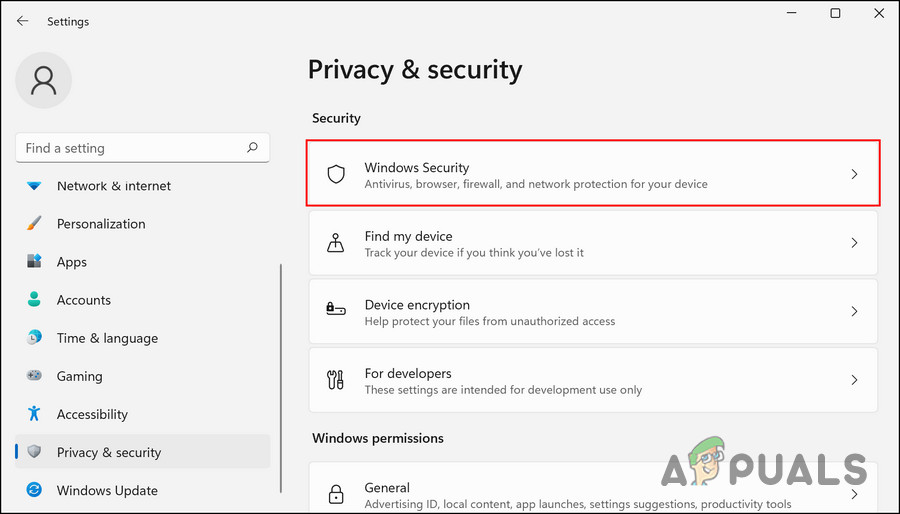
Click on the Windows Security section - In the following window, click on Virus & Threat protection.

Access the Virus & threat protection settings - Next, scroll down to locate Microsoft Defender Offline Scan and click on it.
- Hit the Scan now button and wait for the process to complete.
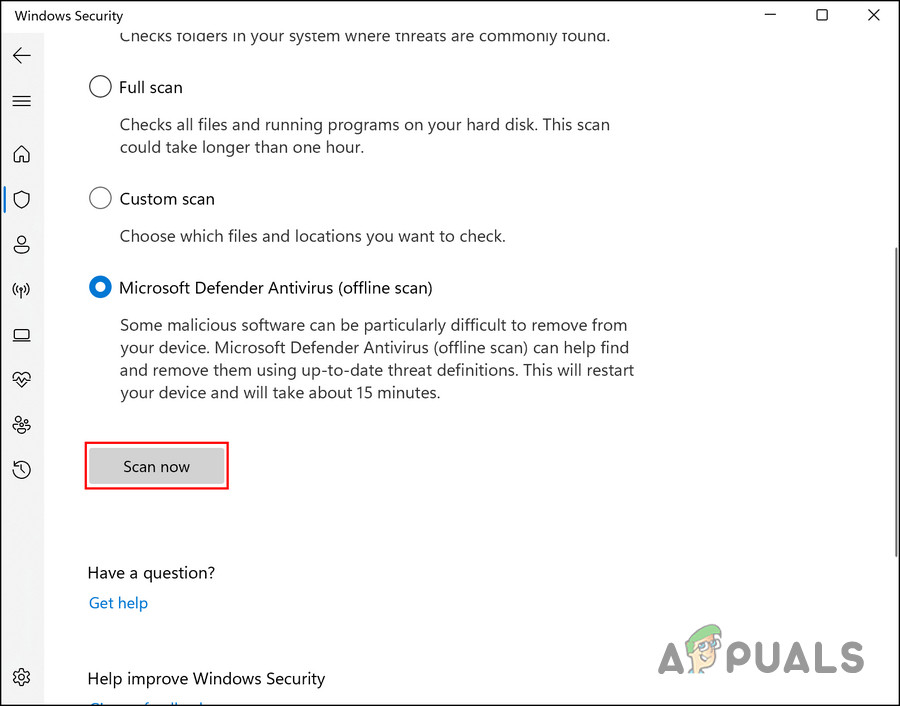
Click on the Scan now button
If you are using Windows 10, follow these steps to resolve the Prime.exe issue:
- Type Windows Security in the search area of the taskbar and click Open.
- In the following window, choose Virus & threat protection.
- Click on the Scan options hyperlink.
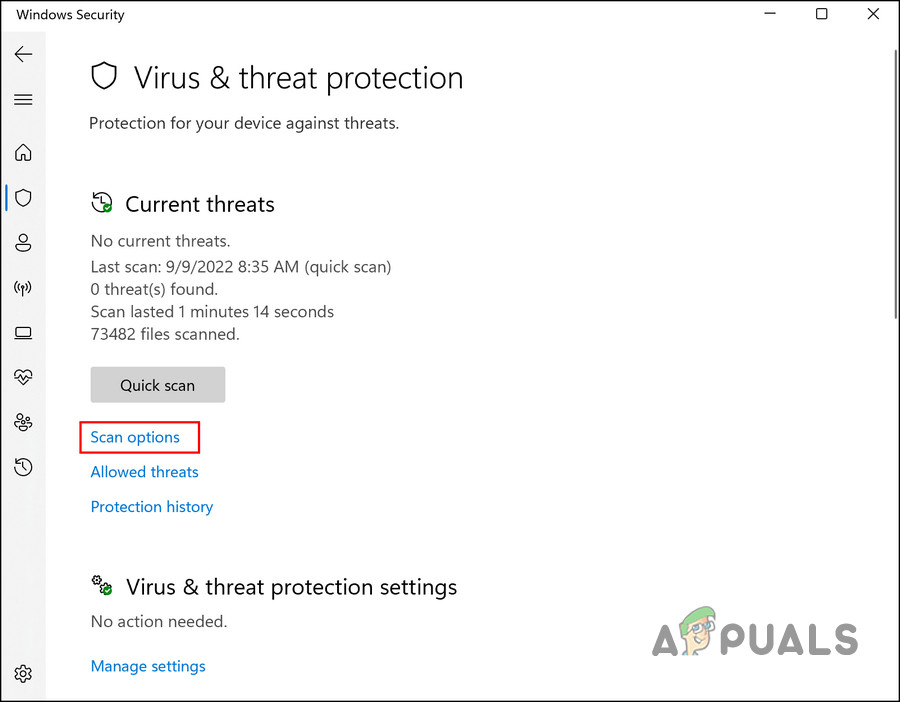
Click on the Scan options hyperlink - Now, locate Microsoft Defender Offline Scan and click on it.
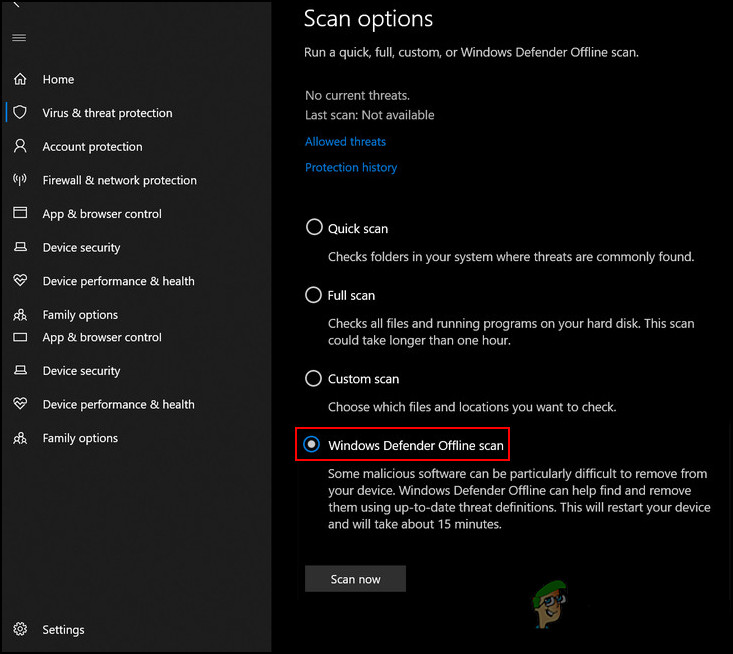
Microsoft Defender offline scan - Hit the Scan now button and wait for the process to complete.

Click on the Scan now button
Once the scan is completed, your PC will automatically reboot. Upon reboot, hopefully, the issue will be resolved.
If the files identified as malicious by Malwarebytes are not crucial, you can remove them from the system to resolve the issue. Otherwise, you can fix the corrupt system files using the System File Checker. We have discussed this method later in this guide.
2. Clean the Junk Files
Another fix for users in resolving the Prime.exe issue was cleaning out the junk files from the system.
If this scenario is applicable, you can either proceed with the built-in cleaning utility within Windows called Disk Cleanup or use any third-party solution you prefer. In this method, we will be using the Disk Cleanup tool to demonstrate the steps:
- Press Win + R to open Run.
- Type cmd in the text field of Run and press Ctrl + Shift + Enter to open Command Prompt with administrative privileges.
- Once inside the Command Prompt window, type cleanmgr and enter. This should launch the Disk Cleanup utility.
- In the following dialog, choose the drive you want to scan for junk files and click OK.
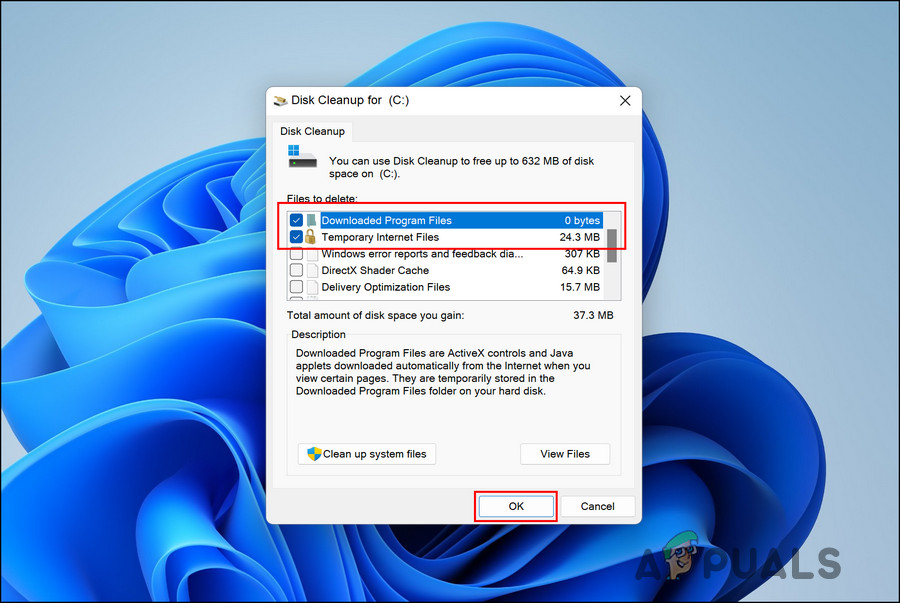
Run the disk cleanup utility - Wait for the scanning process to complete, and then choose the files/folders you want to remove.
- Click OK to proceed.
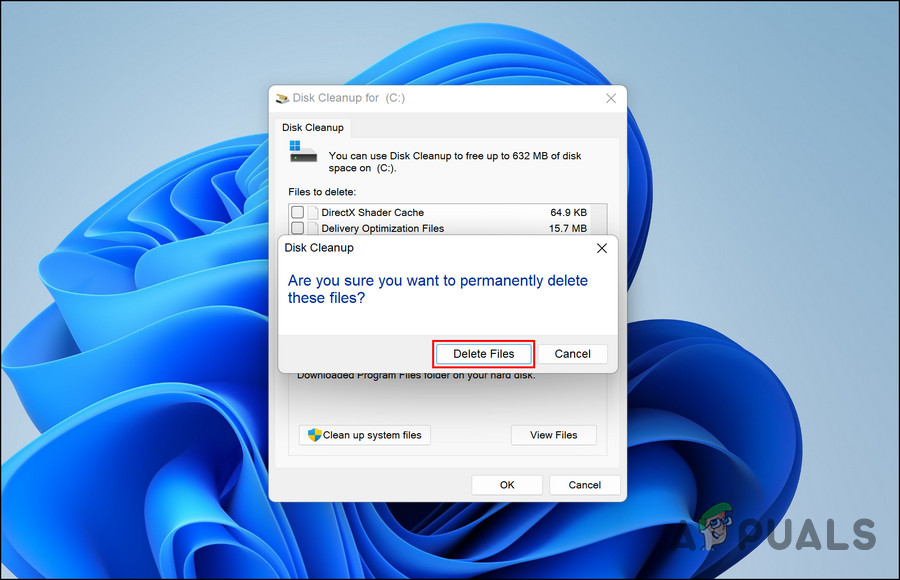
Remove the corrupt files
Once you have cleared the junk files from the disks, check if the Prime.exe issue is resolved.
3. Run an SFC Scan
There are times when corruption errors or viruses within the protected system files can also result in issues like the one at hand. In most other file corruption cases, the first solution that comes to mind is deleting the infected components, which is not recommended in the case of system-related files.
In this case, the best course of action is to run the System File Checker, a utility designed by Microsoft. It scans the system for problematic files, and if any issues are identified, it will replace the corrupt files with their healthy counterparts without harming the system.
You can run this utility using the Command Prompt. The best part about using it is that this tool does not require a lot of user input to function.
Here is how you can run an SFC scan on Windows:
- Press the Win + R keys together to open Run.
- Type cmd in the text field of Run and press Ctrl + Shift + Enter keys together. This will launch Command Prompt as an administrator.
- Alternatively, you can type cmd in Windows search and click on Run as administrator.
- Once you are inside the Command Prompt window, type the command mentioned below and hit Enter.
sfc /scannow
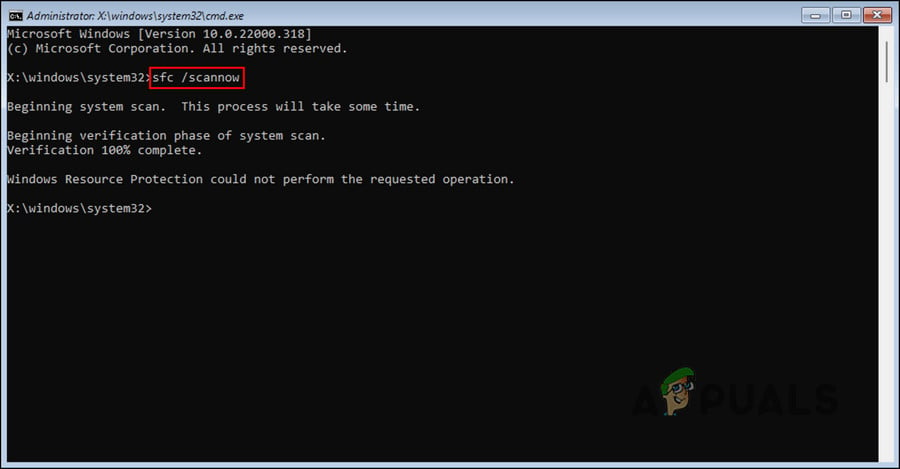
Run the system file checker using Command Prompt - Wait for the command to execute, and once it is done, restart your computer.
Hopefully, you will not face the problem again at the restart.
If the Prime.exe issue persists, it is a good idea to connect with the official Microsoft support team and report the issue. They will be able to identify the issue for you and suggest relevant troubleshooting steps.





